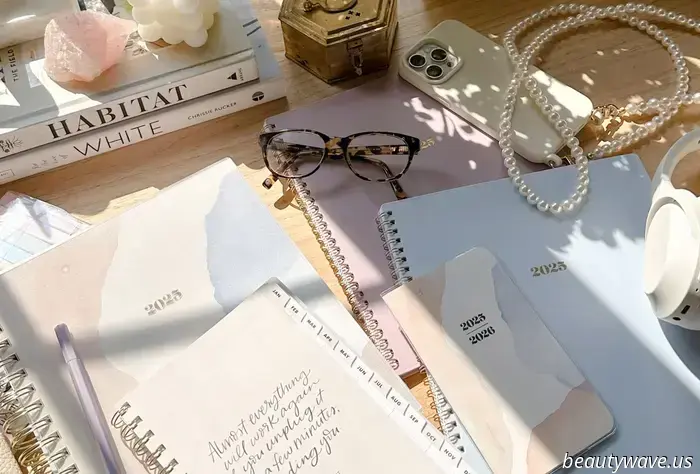
What is Causing the Decline of Plus-Size Clothing Choices?
I wear a size 16/18 and have a passion for fashion, but these two aspects are becoming harder to align. While I aspire to wear the same stylish sets, cropped tops, or trendy items my straight-sized friends don, finding clothes that fit my plus-sized figure—and excite me—has become a challenge. (I'm not interested in cold-shoulder tops or oversized potato sacks that conceal my curves instead of accentuating them.)
I’m not the only one facing this issue. A study published in 2016 by the International Journal of Fashion Design Technology and Education found that the typical American woman is between a size 16 and 18, and 67% of American women are classified as plus-size (wearing sizes 14 and above). Nevertheless, many brands stop at size 12, and hopes for more choices seem to be dwindling.
The Vogue Business size inclusivity report, which began in 2023, aims to shed light on the discrepancies between the size of fashion consumers and those presented on the runway. The initial report for the Autumn/Winter 2023 season examined 9,137 looks across 219 shows, revealing that only 0.9% were plus-size (US 14+), 3.9% were mid-size (US 6-12), and a staggering 95.2% were straight-size (US 0-4). The latest report, published in March 2025, indicated that the representation of plus-size models had plummeted to a mere 0.3%—out of 8,703 looks across 198 shows, only 24 items would fit the average consumer.
Megan Ixim, a fashion strategist and fat activist, believes that inclusivity seems to be more of a trend than a commitment. “In 2018 and 2019, the fashion industry faced scrutiny that prompted brands to highlight representation through diverse models and sizes,” she notes, mentioning the significant influence of the body positivity movement during that period. Brands worried about backlash for lacking diversity hastily introduced extended sizing. (To Ixim and other specialists consulted for this article, a truly size-inclusive line should range from XS to 6X.)
Brands like Adidas, Anthropologie, and Athleta entered the plus-size fashion market by launching extended sizing in 2019. Forever 21, which had offered plus sizes online through its “curve” initiative since 2009, initially seemed invested but has since rolled back these efforts.
For instance, Loft introduced its plus-sized line in late 2017 but quietly removed it from its website by March 2021. When shoppers questioned this on Instagram, the brand stated, “Due to ongoing business challenges over the past year, we have had to make some very tough decisions that have affected our future sizing.” By fall 2021, they reverted to their original sizing, which capped at size 18.
Similarly, Forever 21 deactivated its Instagram account focused on plus sizes in summer 2024, a fact noted by Stella Kittrell, who had modeled for the brand. Like many plus-size women, Kittrell experienced frustration over the limited options available in her size. While her friends scoured stores for the latest fashions, she felt constrained to blazers and button-ups from Lane Bryant and could not express herself fully through clothing. Landing a modeling job for the newly expanded line at Forever 21 felt like a dream realized for her.
“In hindsight, these efforts feel performative,” she observes. “Emotionally, it’s like, ‘Clearly these brands never cared.’ Why would I spend my money there?”
Lauren Hope Krass, a comedian, fat activist, and creator of the street-style interview series Fat Fashion, highlights that the rationale behind brands scaling back their inclusive lines is apparent. “It stems from fat phobia and an anti-fat bias that has permeated our culture,” she explains. “It’s ridiculous because there’s profit to be made. Brands are missing an opportunity.”
Ixim notes that when she consults fashion brands on fit and style, she often finds herself as the sole plus-sized representative in the room. How does she perceive brands that retract larger sizes as rapidly as they introduced them? “It lacked authenticity. Brands launched plus-size lines without dedicating resources to fit or marketing, then claimed, ‘It didn’t sell.’”
Lauren Gray, a fashion consultant and owner of What Lo Wants—a sustainable fashion brand that originally focused on plus sizes but later expanded to include straight sizes—points out an issue within the existing plus-size market is the insufficient investment in models who wear the sizes the brands are producing.
“Each body is unique. Simply enlarging a small size's dimensions to suit a larger figure leads to poor fit,” she explains. “That's why fast fashion brands like Fashion Nova and Shein may stock larger sizes, but their fit tends to be inadequate; they don’t prioritize trying the clothes on real people.”
A typical





Other articles
 Shop Now: The Everygirl’s Planner and Desk Accessories Collection Has Expanded Even More!
You'll be COMPLETELY IN LOVE with the latest releases.
Shop Now: The Everygirl’s Planner and Desk Accessories Collection Has Expanded Even More!
You'll be COMPLETELY IN LOVE with the latest releases.
 The Everygirl's Reading Challenge for Spring 2025
We have created a spring reading challenge that also serves as a guide to embracing the season with books that embody the essence of spring.
The Everygirl's Reading Challenge for Spring 2025
We have created a spring reading challenge that also serves as a guide to embracing the season with books that embody the essence of spring.
 Anastasia Kas is a contemporary artist
Anastasia Kas is a contemporary artist
Anastasia, you have been a member of the Union of Artists of Russia for many years and are one of the brightest representatives of the younger generation of contemporary artists. In what style of painting do you paint? I write in a modern style. It can be said that this is a mix of expressionism with a combination of symbolism. It is important for me that the painting carries creative energy, creates a sincere and warm atmosphere. Every painting…
 Grab Your Bags—Camp Everygirl Awaits!
a weekend getaway reminiscent of The Parent Trap!
Grab Your Bags—Camp Everygirl Awaits!
a weekend getaway reminiscent of The Parent Trap!
 20 Spring Dishes That Highlight This Season's Fresh Produce
I'll be right back; I'm adding everything to our grocery list.
20 Spring Dishes That Highlight This Season's Fresh Produce
I'll be right back; I'm adding everything to our grocery list.
 In-Office Employees Are Engaging in Task Masking—And Could Face Termination Because of It
With the full implementation of return-to-office mandates, employees are increasingly engaging in "task masking," which is causing problems for their careers.
In-Office Employees Are Engaging in Task Masking—And Could Face Termination Because of It
With the full implementation of return-to-office mandates, employees are increasingly engaging in "task masking," which is causing problems for their careers.
What is Causing the Decline of Plus-Size Clothing Choices?
Following a surge in options for plus-size clothing, numerous brands appear to be gradually retreating from offering inclusive sizing.
